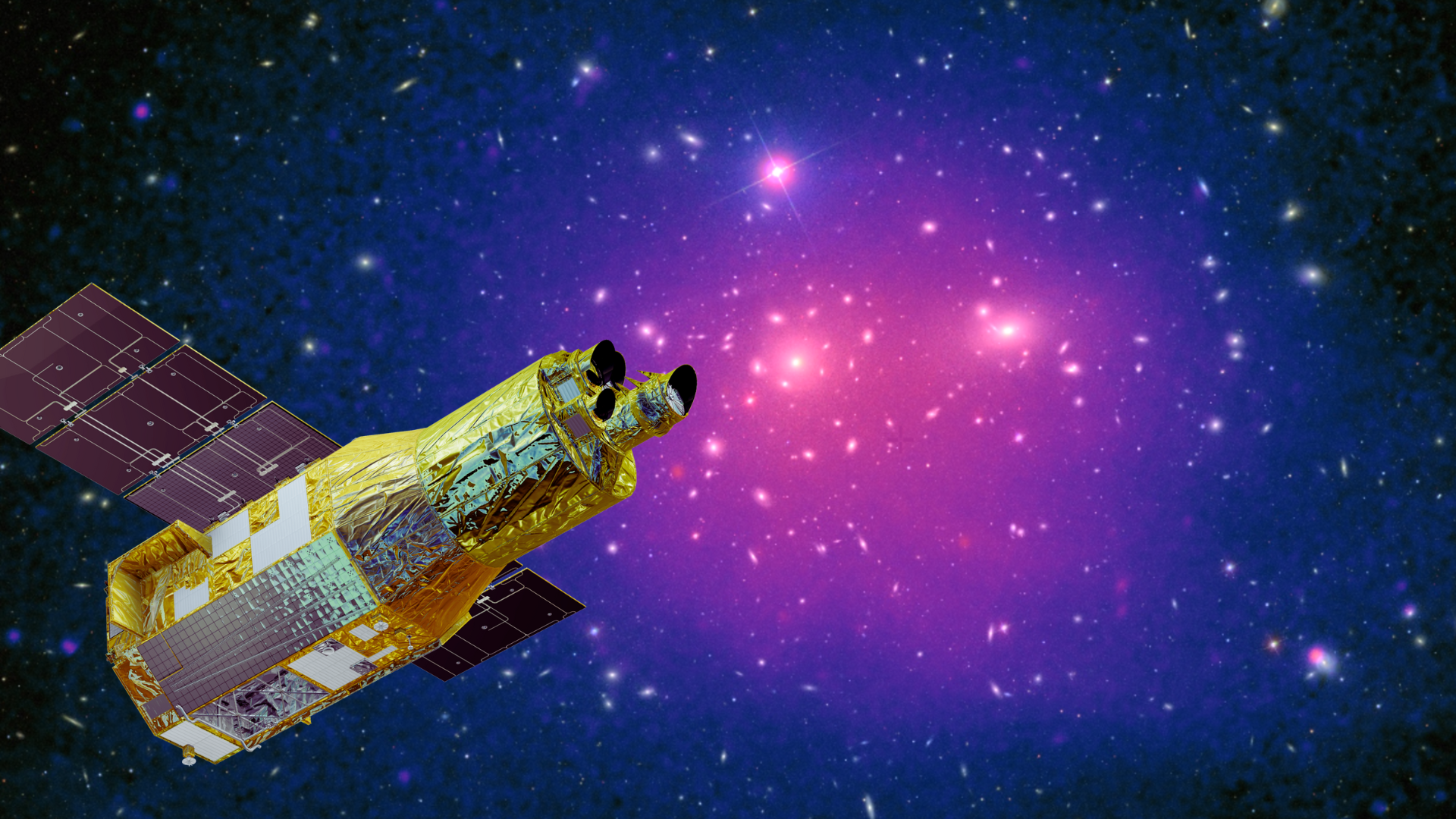
A major X-ray observing mission is set to launch on Saturday (Aug. 26), aiming to provide astronomers with views of some of the universe's most extreme, explosive and hot objects and events.
The X-Ray Imaging and Spectroscopy Mission (XRISM), a collaboration between NASA and the Japanese Aerospace Exploration Agency (JAXA) with assistance from the European Space Agency (ESA), will study things like hot gas envelopes surrounding galaxy clusters and violent outbursts from monster black holes. Its results should help scientists better understand the evolution of the universe.
"X-ray astronomy enables us to study the most energetic phenomena in the universe," Matteo Guainazzi, ESA project scientist for XRISM, said in a statement. "It holds the key to answering important questions in modern astrophysics: How the largest structures in the universe evolve, how the matter we are ultimately composed of was distributed through the cosmos, and how galaxies are shaped by massive black holes at their centers."
Related: X-rays reveal how 450-year-old Tycho supernova became a giant cosmic particle accelerator
XRISM will launch atop an H-IIA (H-2A) expendable launch system operated by Mitsubishi Heavy Industries (MHI) from Tanegashima Space Center, Japan. It is expected to operate for at least three years.
Guainazzi explained that the 8% observing time ESA is allocated from XRISM's available operating time will help form a bridge between the space agency's currently operating XMM-Newton mission, which has spent 24 years in space collecting X-ray data, and Athena, set to launch in the late 2030s.
Seeing the the extreme universe in X-rays
While astronomers have become adept at seeing cosmic objects like stars and galaxies that emit light associated with the visible region of the electromagnetic spectrum, which is the section our eyes have evolved to see, these observations only paint part of the wider cosmic picture.
The cosmos is also permeated by electromagnetic radiation associated with low-energy infrared wavelengths, which the James Webb Space Telescope (JWST) captures to great effect, as well as high-energy X-rays and gamma-rays.
Though invisible to our eyes, those X-rays are emitted by things like gas lurking between stars and galaxies and from extreme and violent environments. Studying them can therefore add important details to our cosmic tapestry of the universe.
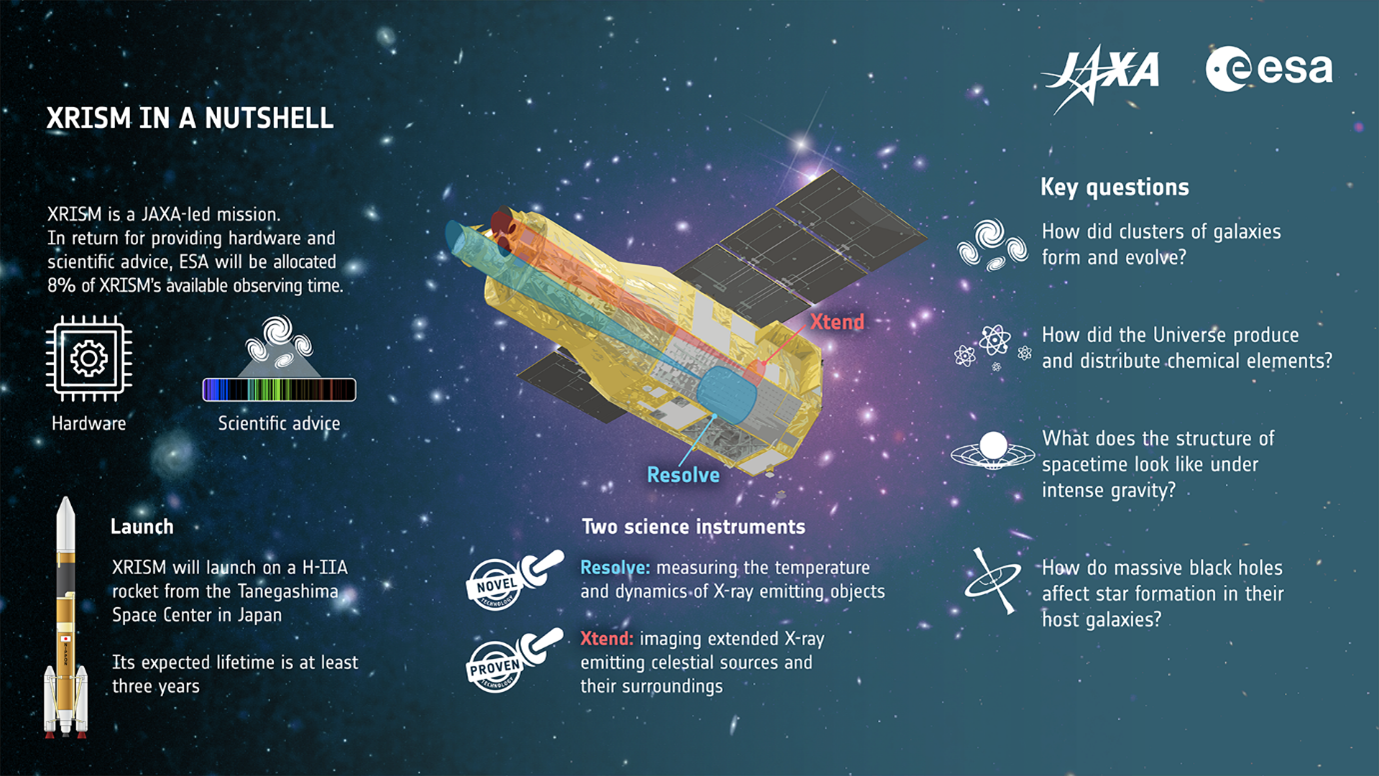
For example, one key function of XRISM will be to study X-rays coming from super-hot massive envelopes of gas that surround galaxy clusters — some of the largest structures in the known universe. This should help with measuring the masses of these clusters as well as their gas envelopes, thus allowing astronomers to better understand how these systems might've evolved.
In addition, X-rays from the gas envelopes could help astronomers determine how enriched the shells are with elements heavier than hydrogen and helium. Those heavier elements are called "metals."
Metal composition is important to know because when the universe first began to be populated with stars and galaxies, the only elements that existed in considerable amounts were hydrogen and helium plus a tiny smattering of metals like nitrogen. It was the first generation of stars that synthesized heavier elements through nuclear fusion of hydrogen and helium at their cores.
These heavy elements were then dispersed into the cosmos when the first stars exploded as supernovas at the end of their lives. This enriched gas clouds surrounding galaxies with metals. Then, when overly dense patches of those clouds collapsed, to birth the second generation of stars, they produced even more metal-rich stars.
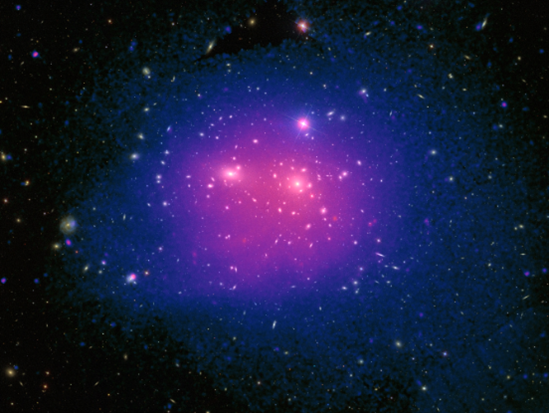
XRISM will be capable of measuring the energy of high-energy X-ray photons, or light particles, by using its Resolve instrument. ESA's forthcoming Athena mission will include a similar device that will be informed by how Resolve performs with XRISM.
Resolve will allow astronomers to measure the temperatures and velocities of hot gases the mission observes with a high degree of accuracy. Plus, by mapping the metals in these clouds via emitted X-rays, XRISM could help scientists better determine how the stellar-metal-enrichment process has proceeded throughout the last 13.8 billion years of cosmic history.
XRISM's innovative X-ray investigation will also help physicists learn more about some fundamental cosmic phenomena, too.
How XRISM will put Einstein to the test
Albert Einstein's 1915 theory of general relativity is currently known as the best explanation of gravity on cosmic scales we have, but there are still aspects of the universe that it struggles to account for. For instance, it doesn't quite explain the way the universe's expansion is accelerating.
This is why scientists still continue to test the limits of general relativity, which is also known as Einstein's geometric theory of gravity as it suggests objects with masses "warp" the fabric of space and time. According to general relativity, it is from this distortion that "gravity" arises. The more massive and dense an object is, the greater the distortion it causes.
The effects of such warping, interestingly, can also be seen when electromagnetic radiation or light passes by a distortion.
XRISM will make use of this effect when it looks at X-ray emissions from materials that surround the most massive and dense objects in the universe, namely supermassive black holes that lie at the center of most, if not all, large galaxies.
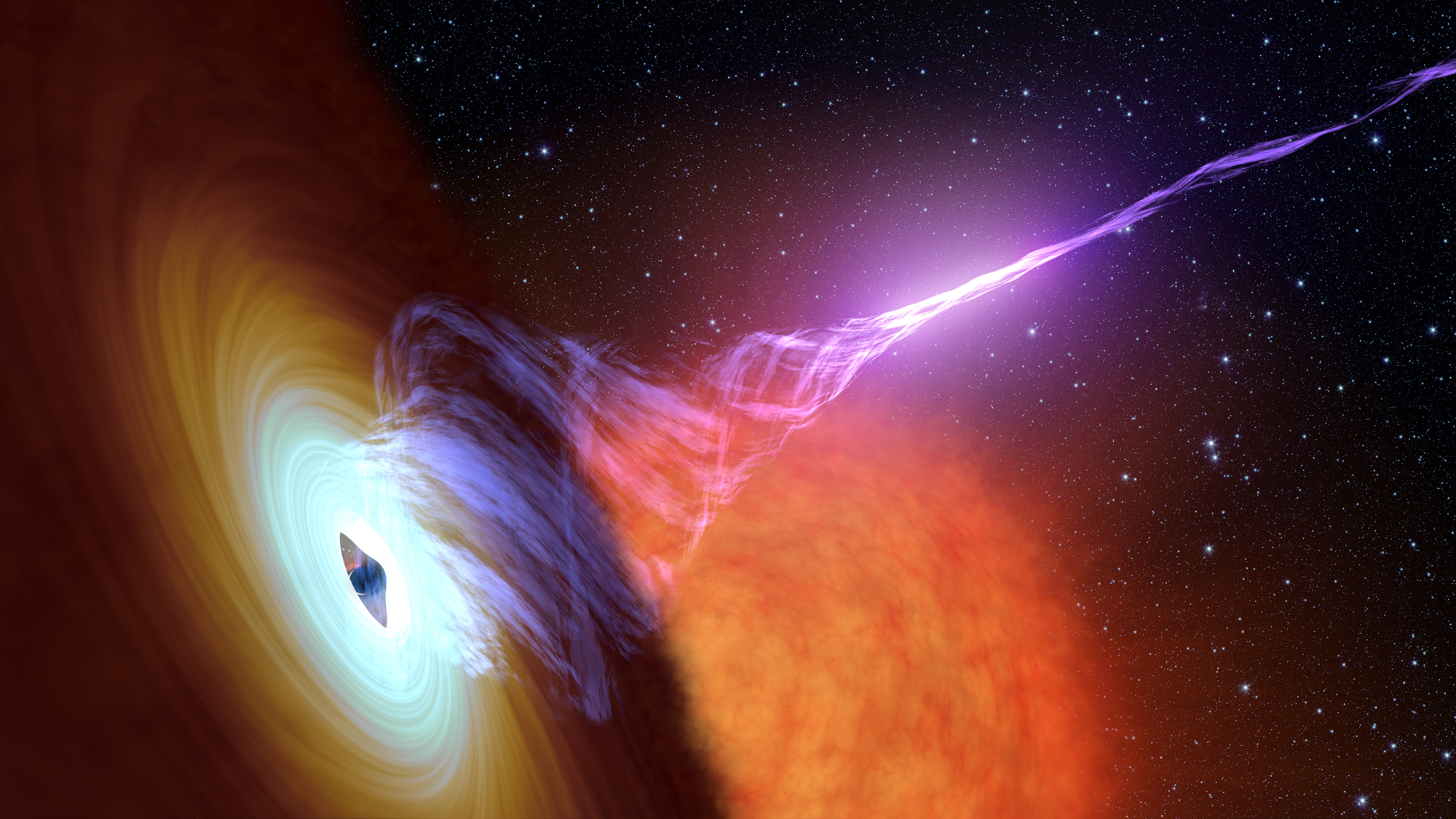
As these supermassive black holes feed on matter around them, an act that forms a flattened disk called an accretion disk, that material gets heated to tremendous temperatures. Additionally, powerful magnetic fields of the supermassive black holes channel charged matter in these disks that doesn't actually fall "into" the black hole to the void's poles, from where it gets blasted out in the forms of jets and winds moving at close to the speed of light.
Both of these processes, including the heating of material in accretion disks and the blasting of powerful winds and jets, cause that matter to emit X-rays.
So, by looking at these X-rays with XRISM, scientists can determine how warped spacetime is around supermassive black holes, thus testing general relativity under perhaps the most extreme circumstances imaginable.
Performing such fundamental physics investigations with X-rays and any high-energy astronomy requires sophisticated technology, and XRISM certainly fits the bill.
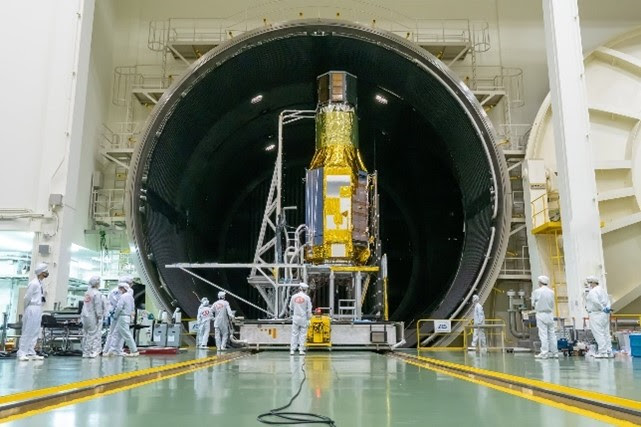
The blast-off of XRISM is set for 8:34 pm ET (0034 GMT) on Saturday and can be watched live in Japanese and English on JAXA's YouTube channel. Live mission updates are available on JAXA's Twitter feed.







